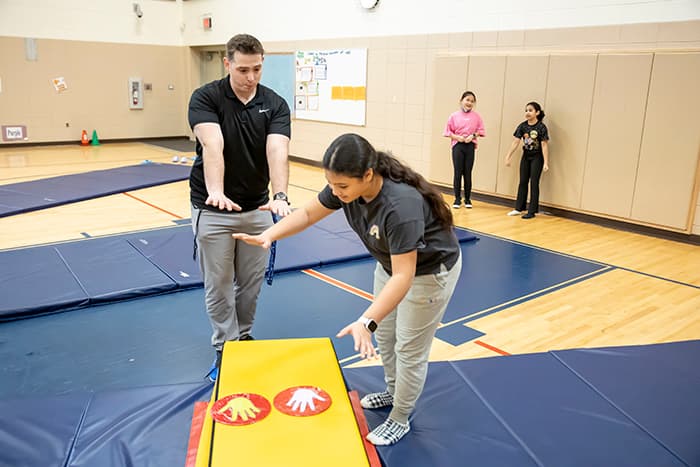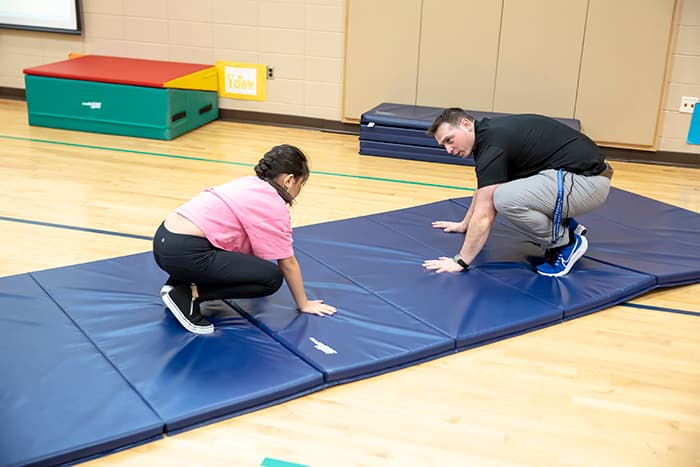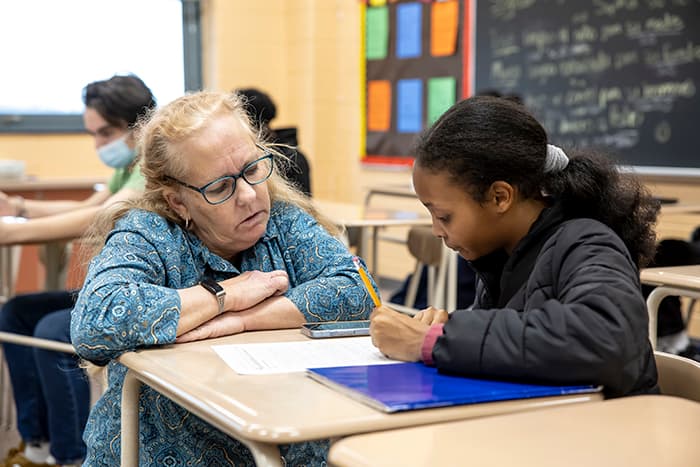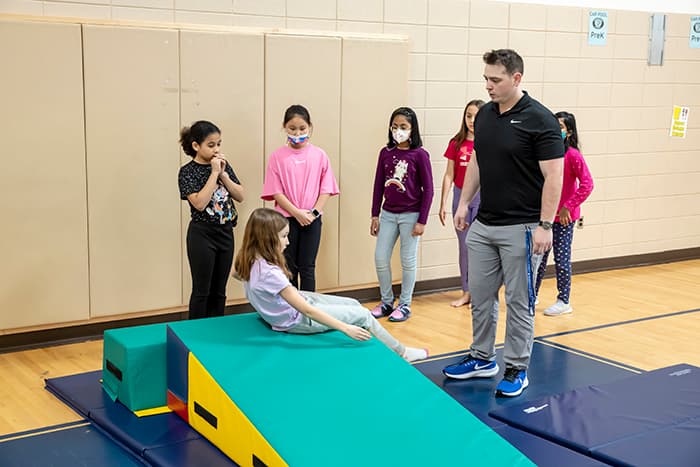Conditional Teaching: A Pathway to Becoming a Professional Teacher
May 23rd, 2023

Neither Pamela Paris nor William Perez began their careers as teachers.
Paris earned a degree in visual communications, ran a graphic design business, and was a stay-at-home mom for 20 years before becoming a testing assistant at Oakland Mills High School. Perez studied Exercise Science in college and graduate school and worked as a clinical research coordinator in the geriatric department of a Veterans Affairs hospital. Neither had taught in a classroom before.
However, because both had bachelor’s degrees, they were eligible to apply to become conditionally certified teachers.
Conditionally certified teachers are teachers who need to complete coursework and/or assessments to meet professional certification requirements. They are given two (and in some instances four) years within which to complete that work. If they successfully do so, they can transition from a conditional certificate to a professional certificate.

“Conditional certification/employment gives HCPSS the flexibility to hire educators who don’t take the ‘traditional path’ by going to an accredited teacher preparation program and earning their teacher certification into the teaching profession,” explains Kim Bookhultz, HCPSS’ Coordinator of Position Control, Staffing and Employee Credentialing. “HCPSS supports them in earning their teaching credentials and creating a path for them to become professionally certified teachers in our district.”
Conditionally certified teachers receive several types of support from HCPSS. For example, they receive help from Bookhultz’s team in identifying which courses and assessments they need to take and where they can take them. (Depending on what their academic needs are, they may choose to join a HCPSS-sponsored cohort with other HCPSS staff who are similarly situated.) They are also eligible for tuition reimbursement (up to a maximum of 45 graduate credits and a maximum of 24 undergraduate credits) for the courses they take toward their teaching credentials. In addition, in some instances the cost of their Praxis assessments (required for professional certification) is covered by HCPSS, as is tutoring to help them pass those assessments. Like other new teachers, conditionally certified teachers are also able to work with teacher development liaisons and can be assigned a teacher mentor to support their growth. And in many, if not most, cases, the student teaching requirement for professional certification can be met through their daily work while teaching with conditional certification.
Such benefits are invaluable according to Paris and Perez.
“The employee credentialing specialist I worked with was terrific and helped me to figure out exactly what requirements I needed to fulfill and how to fulfill them,” Paris says. “The fact that I could keep my job and earn a paycheck and fulfill my program requirements with little out-of-pocket cost was also incredibly helpful,” Paris says.
Perez agrees.
“My employee credentialing specialist reviewed my transcripts carefully and helped me to figure out that my content area coursework was covered through my graduate and undergraduate degrees. That meant I could focus my attention on getting my certification and completing my year of required teaching,” he recalls. “What was great was that I could not only complete that teaching requirement through the work I was doing as a conditional teacher; with tuition reimbursement, I also didn’t have to worry about going into debt to get my certification.”
With the benefits of conditional teaching come some challenges, Paris and Perez note. Among them: having to balance the demands of work and school.
“It sometimes felt like having two full-time jobs,” Paris recalls. “I’d teach all day and then have to take classes and study in the evening. It was a lot, and there were definitely times when I wasn’t sure how I could get everything done.”
“What’s tough is that you want to give your best in both places,” adds Perez. “You want to make sure that you are present and engaged with your students, but you also want to do well in your classes and get as much out of them as you can.”
At the same time, as new teachers, Paris and Perez were met with situations and circumstances they hadn’t experienced before.
“In many ways, you’re really learning as you go,” Perez says. “You’re discovering what it takes to engage students and to deal with behavioral issues and to stay organized, and you’re constantly trying to build on that knowledge to do a better job.”
Both Paris and Perez credit their colleagues and administrators for supporting them through those tougher periods.
“The students [in my master’s program] were amazing. They were so supportive and encouraging–and they understood exactly what I was going through because they were going through the same thing at different HCPSS schools,” Paris says.
“HHES has been so supportive of me. People are always offering to help me out; they want to see me succeed,” says Perez.
Perez began coursework toward his certification in January 2023 and is aiming to be done by 2024. He teaches physical education at Hanover Hills Elementary School.
Paris completed her master’s in teaching and now holds a standard professional teaching certificate. She is a permanent special education teacher at Reservoir High School.
 HCPSS
HCPSS


